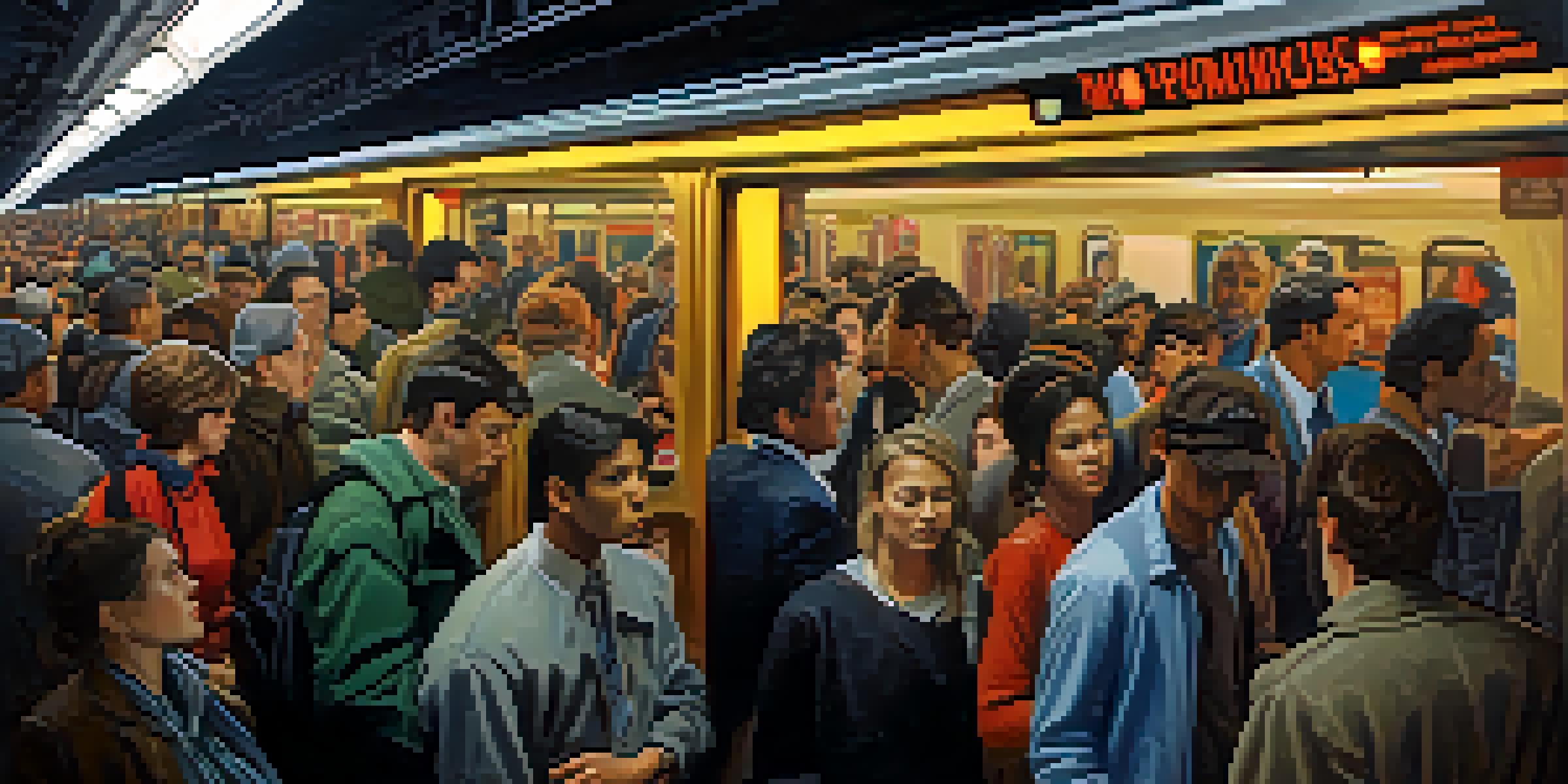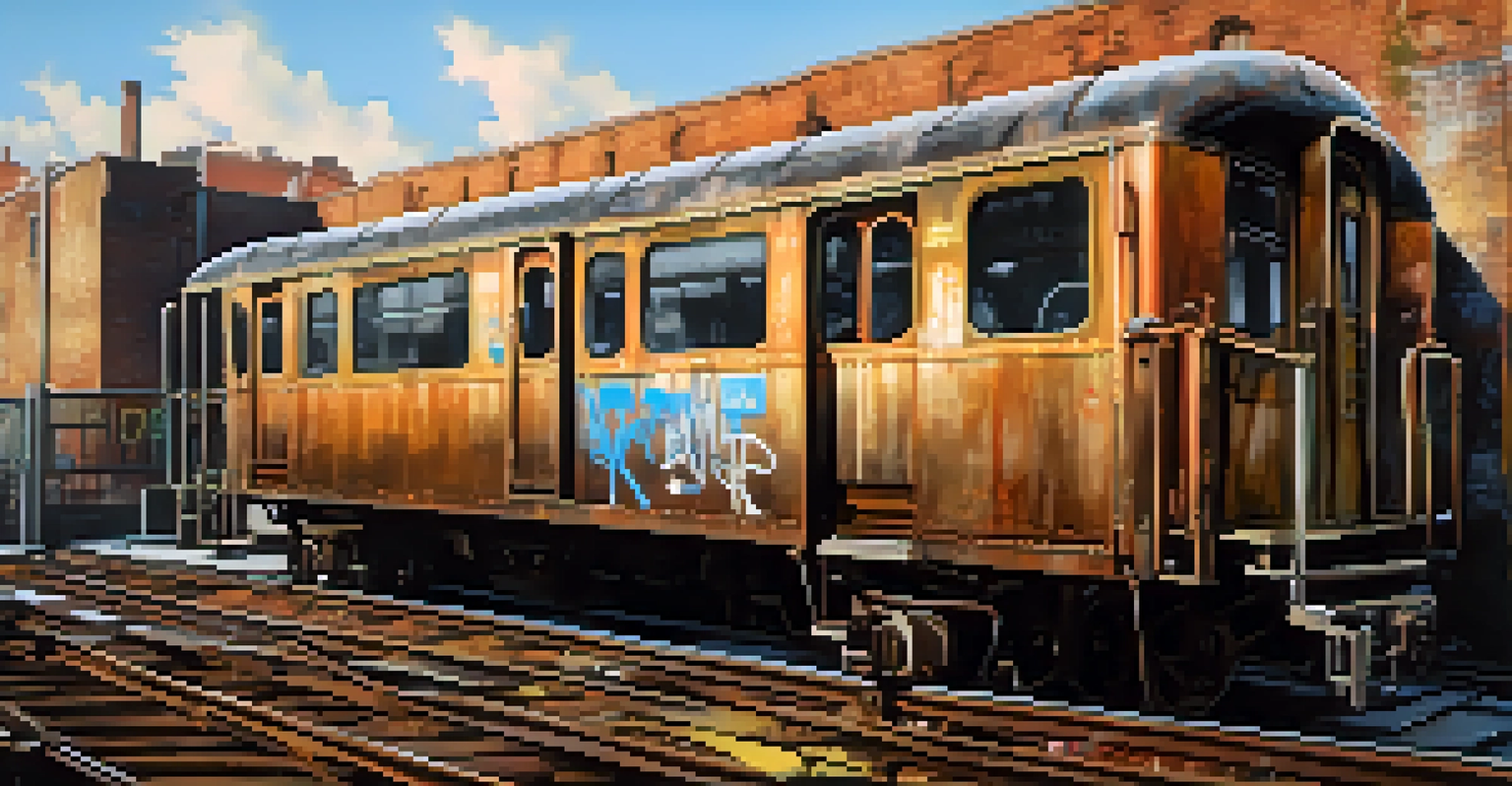Public Transport Struggles: NYC's Aging Subway System

The Historical Context of NYC's Subway System
New York City's subway system, one of the oldest in the world, began operations in 1904. This rich history is a testament to its importance in the daily lives of millions. However, its age brings challenges, with many parts of the system reflecting the wear and tear of over a century of use.
The subway is a lifeline for the city, and without it, New York will lose its pulse.
Originally designed to accommodate smaller populations, the subway has been stretched to its limits as the city’s population has surged. As a result, outdated infrastructure struggles to support the demands of modern commuters. This historical context helps us understand why the subway is facing significant struggles today.
The charm of riding a piece of history can quickly turn sour when delays and overcrowding become the norm. It’s like trying to fit a square peg in a round hole—no matter how much you push, it just doesn’t work as smoothly as it should.
The Daily Struggles of Commuters
For many New Yorkers, taking the subway is an essential part of their day. However, the daily commute is often filled with frustrations, from long wait times to unexpected delays. Picture the bustling platforms filled with people, all sharing the same anxious glances at the clock, hoping for a timely arrival.

Commuters frequently face overcrowding, especially during rush hour, making it feel like they're sardines packed tightly in a can. This not only affects comfort but also adds to the stress of getting to work or school on time. It’s a shared struggle that many New Yorkers can relate to, turning their daily routine into a test of patience.
Aging Infrastructure Needs Upgrades
NYC's subway system faces significant challenges due to its aging infrastructure, which struggles to support modern demands.
The unpredictability of the subway schedule can lead to missed appointments and late arrivals, leaving riders feeling helpless. Imagine having to rearrange your life around a transit system; it’s more than just an inconvenience—it's a real disruption.
Infrastructure Issues: Age and Maintenance Challenges
One of the major issues plaguing NYC's subway system is its aging infrastructure. Many of the tracks, signals, and trains are in dire need of upgrades. This age-old dilemma is akin to driving an old car: you can keep patching it up, but eventually, it will need a significant overhaul to run smoothly.
Public transit is the backbone of urban life; when it works, the city thrives.
Regular maintenance is crucial, yet the funds available for repairs often fall short. As a result, vital upgrades are delayed, leading to a cascading effect on service reliability. It’s like trying to keep a garden blooming with limited water; eventually, the plants will begin to wilt.
Riders often feel the impact of these infrastructure challenges through delays and service disruptions. The frustration is palpable, as they find themselves waiting for repairs that seem to take forever, all while the city continues to grow around them.
The Financial Strain on the Subway System
Funding for the subway has been a contentious issue for years, with budgets constantly under pressure. The cost of repairs and upgrades is immense, and yet, the revenue from fares often isn’t enough to cover these expenses. It’s a bit like trying to live on a budget that just doesn’t stretch far enough, no matter how hard you try.
The COVID-19 pandemic further exacerbated the financial strain, as ridership plummeted and revenue sources dwindled. This loss has left the Metropolitan Transportation Authority (MTA) scrambling to find solutions, often resorting to borrowing or seeking state aid. It’s an uphill battle that affects not just the subway’s functionality but also the future of public transport in the city.
Financial Strain on Operations
The subway's funding issues have been exacerbated by the pandemic, leading to concerns about service reductions and fare hikes.
As budget cuts loom, riders fear further service reductions or fare hikes. The struggle is not just about getting from point A to B but about ensuring the subway remains a viable option for all New Yorkers.
Rider Safety and Security Concerns
Safety is a paramount concern for subway riders, especially in light of recent incidents. As the subway system ages, issues related to crime and safety also come to the forefront. Commuters often find themselves on high alert, navigating not just the crowded trains but also the unpredictability of their fellow passengers.
The MTA has implemented various measures to enhance safety, including increased police presence and surveillance. However, many riders still feel uneasy, questioning whether these efforts are enough to ensure their well-being. It’s like walking a tightrope: balancing the need for efficient transport with the desire for a safe journey.
This ongoing concern can deter people from using the subway altogether, pushing them towards alternatives like rideshares or personal vehicles. As a result, the subway, once a symbol of urban life, is now seen by some as a last resort.
Community Responses and Activism
In response to the challenges facing the subway system, community members and activists have begun to rally for change. Grassroots organizations are advocating for better funding and infrastructure improvements, striving to ensure that the voices of everyday riders are heard. It’s inspiring to see communities come together, united by the common goal of improving their daily lives.
Many activists highlight the importance of public transport in promoting equity, emphasizing that reliable transit is essential for access to jobs and education. They argue that an efficient subway system is not just a convenience; it’s a lifeline for many New Yorkers. This perspective shifts the conversation from complaints to solutions, fostering hope for a better future.
Community Activism for Change
Grassroots organizations are advocating for better funding and infrastructure improvements to ensure reliable public transport for all New Yorkers.
Rallying for change can often feel overwhelming, but these community efforts remind us that collective action can lead to tangible results. It’s a powerful testament to the idea that when people unite for a cause, they can drive real transformation.
The Future of NYC's Subway System
Looking ahead, the future of NYC's subway system is both uncertain and promising. With ongoing conversations about funding and modernization, there is potential for significant improvements. It’s like standing at a crossroads: one path leads to further decline, while the other opens up opportunities for revitalization.
Innovative solutions, such as technology upgrades and more sustainable practices, are being discussed as ways to enhance the system. These advancements could not only improve efficiency but also attract a new generation of riders. The hope is to transform the subway into a seamless and enjoyable experience for everyone.

Ultimately, the success of these initiatives will depend on continued public support and funding commitment. As New Yorkers, embracing the journey ahead means advocating for a subway system that reflects the vibrant, dynamic city it serves.